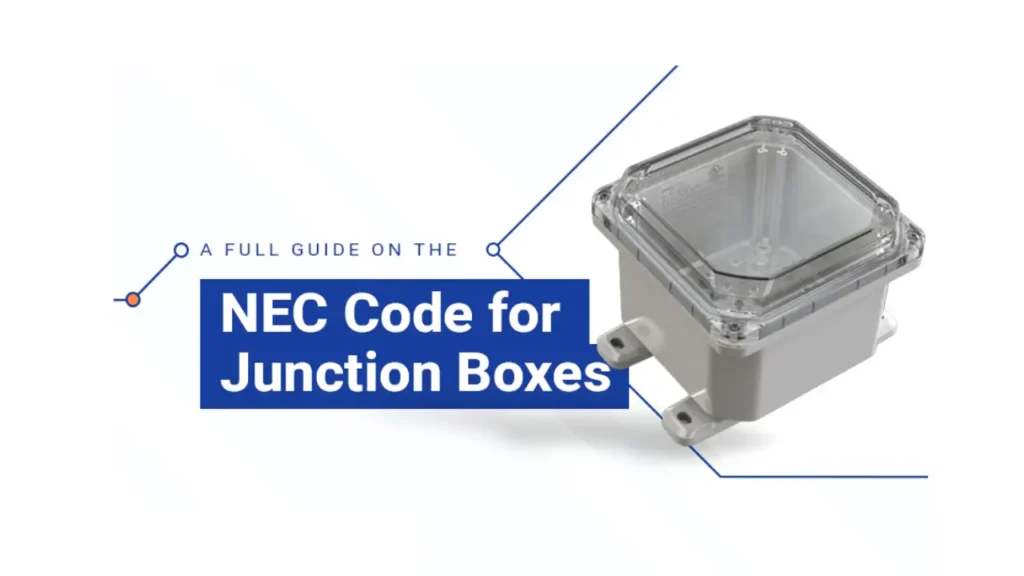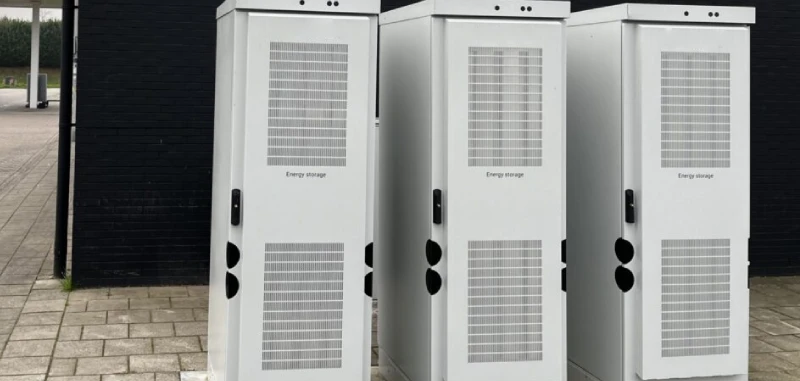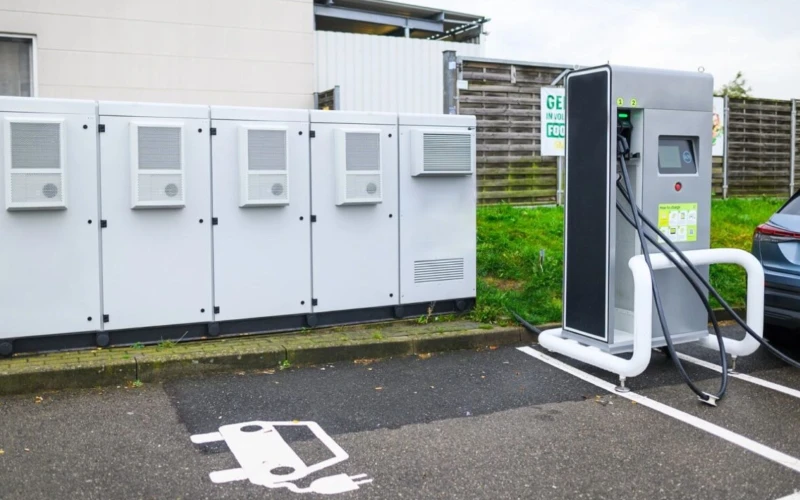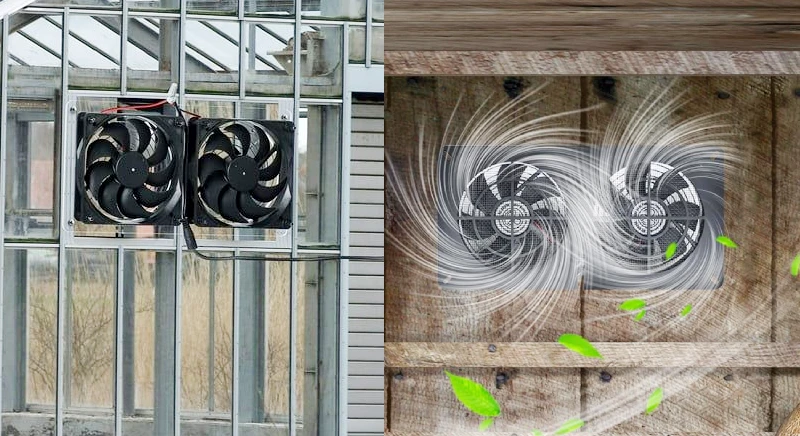Hey there, spark enthusiasts and DIY dynamos! When tackling electrical projects, especially those involving wiring connections, the humble junction box plays a pivotal role. But it’s not just a metal or plastic container; it’s a component governed by a comprehensive set of rules outlined in the National Electrical Code (NEC). Understanding these regulations is paramount for ensuring the safety and functionality of your electrical installations.
This blog post will illuminate the essential aspects of the NEC concerning junction boxes. We’ll delve into what these codes entail, why they are so critical, and how they practically apply to your wiring endeavors. By demystifying the NEC requirements, we aim to empower you with the knowledge to handle junction boxes correctly and confidently, keeping your electrical work safe and up to code.
What Is the NEC Code for Junction Boxes

The National Electrical Code (NEC) sets forth specific regulations for the installation and use of electrical junction boxes to ensure safety and prevent electrical hazards. These codes cover various aspects, including the materials and construction of the boxes, their proper installation and securement, the methods for making safe wire connections within them, and the limitations on how many wires and devices can be contained in a box (box fill). Adherence to these NEC guidelines is crucial for all electrical work involving junction boxes.
The primary goal of the NEC code concerning junction boxes is to protect people and property from electrical dangers like shocks and fires. By mandating accessible locations, secure mounting, correct wiring techniques, and appropriate box fill, the code aims to create electrical systems that are both functional and safe for the long term. Understanding and following these regulations is not just a matter of compliance but a fundamental aspect of responsible electrical practice.
Junction Box NEC Codes
Electrical junction boxes are fundamental components in any wiring system, providing a safe enclosure for wire connections. The National Electrical Code (NEC) establishes crucial guidelines for their selection, installation, and use. Let’s delve into some of the most important NEC codes that govern junction boxes, ensuring electrical safety and compliance.
NEC 314.15 – Damp or Wet Locations
Junction boxes are often installed in locations where they may be exposed to moisture. NEC 314.15 provides rules for installation in such locations.
This section requires that in damp or wet locations, boxes, conduit bodies, and fittings must be placed or equipped to prevent moisture from entering or accumulating within. In wet locations, the boxes, conduit bodies, and fittings must be listed for use in wet locations. This often requires the use of weatherproof enclosures and gaskets.
NEC 314.16 – Box Fill Calculations
When working with electrical junction boxes, determining the correct size is paramount to prevent overheating and potential hazards. NEC 314.16 provides the rules for calculating the maximum number of conductors allowed in a box, a concept known as “box fill.” This calculation considers the volume of the box, the size and number of conductors, and any devices or fittings present.
This section of the NEC outlines a detailed method for calculating the volume of a junction box and how various components, such as conductors, devices (like switches and receptacles), and equipment grounding conductors, contribute to the fill volume. Adhering to these calculations ensures that the box is not overcrowded, which can lead to insulation damage, short circuits, and fire risks. It’s crucial to account for all elements within the box to maintain a safe and compliant installation.
NEC 314.17 – Conductors Entering Boxes, Conduit Bodies, or Fittings
The way conductors enter a junction box is crucial for preventing damage to the wires. NEC 314.17 outlines the requirements for how conductors must enter boxes, conduit bodies, or fittings.
Generally, this section requires that conductors be protected from abrasion as they enter the enclosure. This is typically achieved by using approved connectors or bushings. These devices ensure a smooth entry point, preventing the sharp edges of the box from damaging the conductor insulation.
NEC 314.20 – In Wall or Ceiling
The NEC also addresses how junction boxes should be installed in walls or ceilings. NEC 314.20 specifies the requirements for the set-back of boxes in these applications.
This section generally requires that the front edge of the box be flush with the finished surface of the wall or ceiling. This ensures that devices like switches and receptacles can be properly mounted and that cover plates can be installed correctly, providing a safe and aesthetically pleasing installation.
NEC 314.27 – Outlet Boxes
NEC 314.27 contains rules about the use of outlet boxes, which are a specific type of junction box used for mounting devices like lighting fixtures, switches, and receptacles.
This section provides guidelines on the types of boxes that are suitable for different applications, such as mounting ceiling fans or heavy luminaires. It also addresses the support requirements for these boxes, ensuring that they can safely support the intended load.
NEC 314.28 – Conductor Bending Space
Beyond box fill, the NEC also addresses the space required for conductors to bend within a junction box, particularly for larger wires. NEC 314.28 focuses on providing adequate space for conductors to be bent without damaging them or compromising their insulation. This is especially important for conductors of size No. 6 AWG and larger.
This code section specifies the minimum distances that conductors must be allowed to travel from their entry point into the box to the point where they are connected to a terminal or spliced. These requirements vary depending on whether the conductors enter and exit the box on the same wall (straight pulls) or on opposite walls (angle or U pulls). Providing sufficient bending space prevents stress on the conductors, which can lead to insulation breakdown and electrical failures.
NEC 314.29 – Boxes to Be Accessible
A fundamental principle of electrical safety is ensuring that all components can be inspected, maintained, and repaired. NEC 314.29 emphasizes the importance of accessibility for junction boxes. This code mandates that junction boxes must be installed in locations where they can be accessed without damaging the building structure or finish.
This means that junction boxes cannot be buried behind walls, ceilings, or other permanent building elements. The code recognizes that electrical connections may require attention over time, and preventing access to these connections can create significant safety hazards. Accessible installation allows for easy inspection, troubleshooting, and repairs, minimizing the risk of hidden problems that could lead to fires or other electrical issues.
NEC 250.8 – Connection of Grounding and Bonding Equipment
Grounding is a critical safety measure in any electrical system, and the NEC provides specific rules for how grounding and bonding equipment must be connected. NEC 250.8 details the approved methods for connecting grounding and bonding conductors to junction boxes and other equipment.
This section of the code specifies that grounding and bonding connections must be made using methods that ensure a reliable and electrically conductive pathway. Approved methods include using listed pressure connectors, terminal lugs, exothermic welding, or other approved means. The goal is to create a low-impedance path for fault current, which helps to quickly trip overcurrent protection devices (like circuit breakers) and minimize the risk of electrical shock.
NEC 314.23 – Supports
Junction boxes must be securely supported to ensure that they remain in place and that the conductors within them are not subjected to undue stress. NEC 314.23 outlines the requirements for supporting boxes.
This section describes how boxes must be fastened to structural surfaces, including building elements such as wood, masonry, or metal. It details methods like using screws, bolts, or other approved fasteners, and it also addresses situations where boxes are supported by conduits or other raceways. Proper support prevents the box from moving or falling, which could damage wiring connections and create hazardous conditions.
NEC 314.24 – Depth of Boxes
The NEC also specifies requirements for the depth of outlet boxes. NEC 314.24 provides guidelines for the minimum depth of boxes, especially when used with devices such as switches and receptacles.
This code section ensures that there is enough space within the box to accommodate the devices and the conductors connected to them.shall not be set back more than 1/4 inch. This helps to prevent devices from being improperly installed or from making poor contact with the wall surface, which can lead to overheating or other problems.
NEC 314.25 – Covers and Canopies
Junction boxes must be properly covered to protect the enclosed conductors and connections from accidental contact. NEC 314.25 details the requirements for covers and canopies.
This section mandates that all junction boxes must have covers, and these covers must be securely fastened. It also addresses the use of canopies, such as those used with lighting fixtures, and how they must cover the wiring within the box. The purpose of these requirements is to prevent unintentional contact with live wires, reducing the risk of electrical shock.
NEC 314.40 – Metal Boxes, Conduit Bodies, and Fittings
When metal boxes are used, there are specific requirements to ensure safety, particularly concerning grounding and corrosion resistance. NEC 314.40 outlines these requirements for metal boxes, conduit bodies, and fittings.
This code section often requires metal boxes to be grounded to provide a path for fault current. It also addresses the need for corrosion-resistant materials or finishes, especially in damp or corrosive environments. These provisions help to ensure the long-term integrity of the electrical system and minimize the risk of electrical hazards associated with metal enclosures.
NEC 314.41 – Covers
More specifically, NEC 314.41 elaborates on the requirements for covers for boxes and conduit bodies.
This section states that covers must be compatible with the box or conduit body and suitable for the conditions of use. For example, in a damp location, a weatherproof cover must be used. Metal covers must also comply with grounding requirements outlined in NEC 250.110. This ensures that the covers themselves do not become a shock hazard.
Summary Chart of Junction Box NEC Codes
| NEC Code | Description |
|---|---|
| NEC 314.15 | Damp or Wet Locations: Provides rules for installing boxes in damp or wet locations to prevent moisture ingress. |
| NEC 314.16 | Box Fill Calculations: Ensures adequate space for conductors to prevent overheating. |
| NEC 314.17 | Conductors Entering Boxes, Conduit Bodies, or Fittings: Requires conductors to be protected from abrasion upon entry. |
| NEC 314.20 | In Wall or Ceiling: Specifies set-back requirements for boxes installed in walls or ceilings. |
| NEC 314.23 | Supports: Outlines requirements for secure support of junction boxes. |
| NEC 314.24 | Depth of Boxes: Provides guidelines for the minimum depth of boxes, especially with devices. |
| NEC 314.25 | Covers and Canopies: Details requirements for proper covers and canopies on junction boxes. |
| NEC 314.27 | Outlet Boxes: Contains rules for the use of outlet boxes for mounting devices. |
| NEC 314.28 | Conductor Bending Space: Requires sufficient space for conductors to bend without damage. |
| NEC 314.29 | Boxes to Be Accessible: Mandates that boxes are installed in accessible locations for inspection and maintenance. |
| NEC 314.40 | Metal Boxes, Conduit Bodies, and Fittings: Addresses grounding and corrosion resistance for metal enclosures. |
| NEC 314.41 | Covers: Specifies that covers must be compatible with the box and suitable for the environment. |
| NEC 250.8 | Connection of Grounding and Bonding Equipment: Specifies approved methods for grounding and bonding connections. |
NEC Junction Box Requirements
Figuring out the NEC requirements for junction boxes can feel a bit like navigating a maze, but don’t worry, we’ll break it down into manageable chunks. Understanding these rules is super important for safety and making sure your electrical work is up to code. Let’s dive into some key aspects you should keep in mind when dealing with junction boxes.
Box Fill Calculations
Ensuring you have enough space inside a junction box for all the wires is crucial. The National Electrical Code (NEC) provides specific rules for calculating the maximum number of conductors allowed in a box based on its volume. Different wire gauges and device yokes (like switches or receptacles) contribute differently to this “fill” calculation. For instance, each conductor counts as one, and device yokes are typically counted as one or two conductors depending on their size. Properly calculating box fill prevents overcrowding, which can lead to overheating and unsafe conditions.
Conductor Termination and Splices
Within a junction box, all electrical connections, whether they are terminations on devices or splices between wires, must be properly made and contained. The NEC mandates the use of approved connectors suitable for the conductors being joined. Wire nuts, terminal screws, and other listed splicing devices ensure secure and reliable electrical connections. Leaving exposed wires or poorly made splices is a significant safety hazard and a violation of electrical codes. Junction boxes provide a protected enclosure for these connections, isolating them from accidental contact and physical damage.
Accessibility of Junction Boxes
Once installed, junction boxes must remain accessible. This means they cannot be permanently covered by walls, ceilings, or floors without providing a means of access. The NEC requires that junction boxes be reachable for inspection, maintenance, and future modifications to the electrical system. Ensuring accessibility is vital for troubleshooting and making necessary repairs without causing significant disruption to the building structure. This often involves installing boxes in locations where covers remain visible and can be easily removed.
Securing and Supporting Junction Boxes
Junction boxes need to be securely mounted and supported. The NEC specifies methods for fastening boxes to structural elements of the building, such as studs, joists, or other suitable supports. The weight of the box, along with the wires and devices it contains, must be adequately supported to prevent strain on the conductors and ensure the box remains firmly in place. Proper securing methods contribute to the overall safety and longevity of the electrical installation.
Use in Specific Environments
The NEC addresses the use of junction boxes in various environments, outlining specific requirements for different conditions. For example, in damp or wet locations, such as bathrooms or outdoor areas, listed weatherproof junction boxes and fittings are required to prevent moisture from entering and causing corrosion or electrical hazards. Similarly, in hazardous locations, such as areas with flammable materials, specially designed and listed explosion-proof junction boxes must be used to contain any potential sparks or explosions. Understanding the environment where the junction box will be installed is critical for selecting the appropriate type of enclosure.
NEC Code Junction Box Accessibility
The National Electrical Code (NEC) places a strong emphasis on the accessibility of junction boxes to ensure safety and facilitate future maintenance or repairs.
Section 314.29 of the NEC specifically addresses this requirement, stating that junction boxes must be installed so that the wiring contained within them can be accessed “without removing any part of the building or structure.” This seemingly straightforward rule has important implications for how and where junction boxes can be installed.
General Accessibility Requirements
The core of the NEC’s accessibility rule is to prevent junction boxes from being permanently concealed in a way that would require demolition or significant alteration of the building to reach them. This means you can’t bury a junction box directly in a wall, ceiling, or floor without a way to access it.
The intent is to ensure that electrical connections remain inspectable and serviceable over the life of the electrical system. While the code doesn’t explicitly state that boxes must be accessible without tools, the practical implication is that a cover or access panel should be in place that can be removed with standard tools to get to the wiring inside.
Locations Deemed Inaccessible
Several locations are typically considered violations of the accessibility requirement. These include junction boxes hidden behind finished walls or ceilings with no access panel, boxes buried under flooring without a removable section, or those located in areas that would require substantial effort or damage to the building to reach.
Even covering a junction box with insulation in an attic, without a clear way to locate and access it, can be problematic as it essentially conceals the box. The key is that the box must be able to be located and opened without damaging the permanent building structure or finishes.
Acceptable Accessibility Methods
There are several ways to ensure junction boxes remain accessible as per the NEC. The most common method is to use a cover plate that is securely fastened to the box with screws. This cover remains visible and can be easily removed to access the wiring. In some cases, especially in ceilings or walls, access panels can be installed to provide a removable section of the finished surface, behind which the junction box is located.
For outdoor or damp locations, weatherproof boxes with appropriate covers are used, ensuring both accessibility and protection from the elements. The underlying principle is that the junction box should be locatable and openable without causing damage to the surrounding building.
Implications for Installations
The accessibility rule has significant implications for electrical installations. It requires careful planning of wiring routes and junction box locations during construction or renovation. Electricians must consider how future access might be needed and avoid concealing boxes in inaccessible spots.
This might involve installing additional boxes in more convenient locations or ensuring that any necessary boxes in walls or ceilings have appropriate access provisions. Compliance with this NEC requirement is not just about following the rules; it’s a fundamental aspect of ensuring the long-term safety and maintainability of electrical systems.
Conclusion
Navigating the NEC code for junction boxes is essential for any electrical work, ensuring safety and preventing hazards. Understanding the requirements for location, securement, wiring methods, and box fill is crucial for compliant installations. By adhering to these guidelines, you contribute to a safe electrical system in your home or building.
Properly installed and utilized junction boxes protect wire connections from damage and provide a safe enclosure for electrical splices. Familiarizing yourself with the NEC standards not only ensures you meet legal requirements but also minimizes the risk of electrical fires and other potential issues. Staying informed about these regulations is a cornerstone of responsible electrical practices.
Looking to source high-quality junction boxes for your next project? Get wholesale pricing and a wide selection of code-compliant options from us. Contact us today to learn more and streamline your electrical supply needs!




